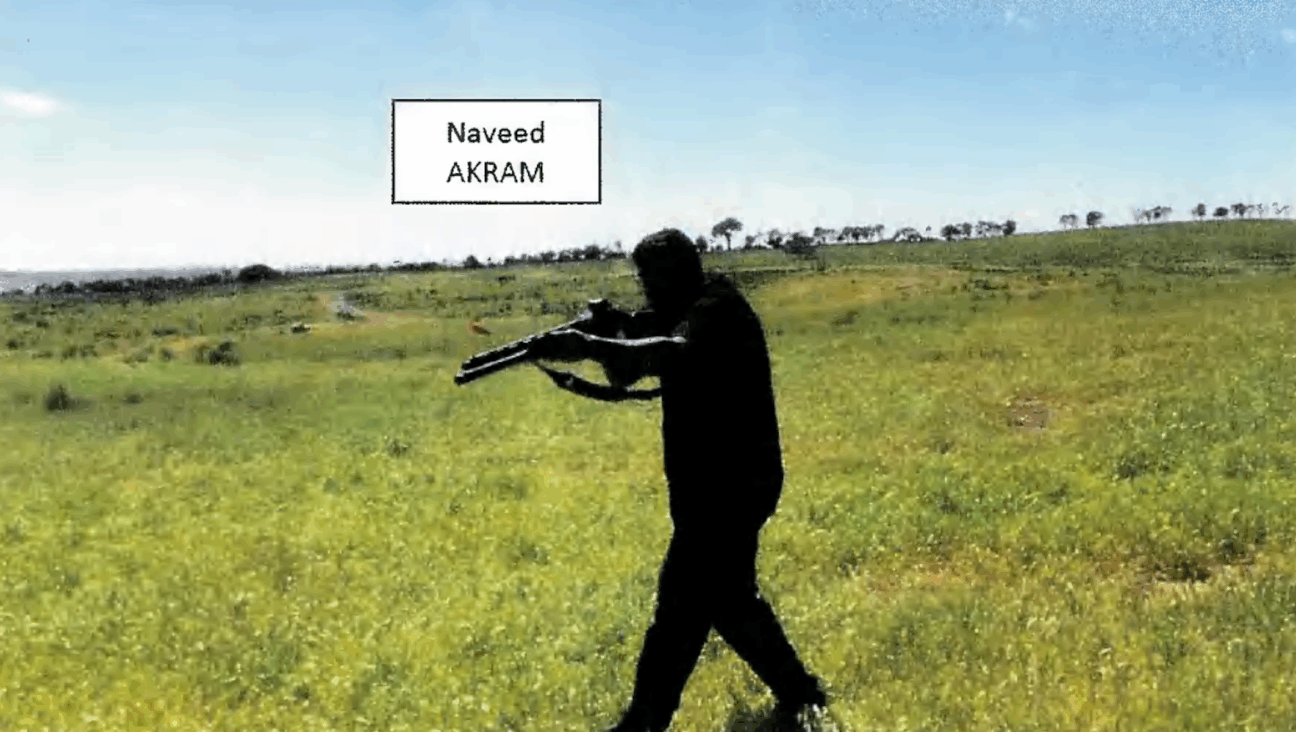All Quiet on the Israel-Gaza Front? All the More Reason To Act Fast

War Games: Israeli children in Kibbutz Nahal Oz near the Gaza border play with toy guns next to a newly built concrete protection wall around their kindergarten. Image by Getty Images
Israel celebrates its independence the day after it mourns the citizens killed in its conflicts. The festivities are a welcome liberation from the grief those deaths caused. This pattern is built into the Israeli conception of the wars, too: Once the violence ends, it’s time to celebrate, not focus on the causes of the violence.
This year, the week before all the mourning and celebrating was the most violent week between Israel and the Gaza Strip since the ceasefire of 2014 ended Operation Protective Edge. This should serve as a wake-up call. In the nearly two years since the last war began, the current government has done the bare minimum to disrupt the eventuality of violence, and Hamas has begun to rearm and build new tunnels. Without action now, the next war could come very soon. We need negotiations toward a durable ceasefire immediately, not after the next war begins.
I’ve witnessed the past three wars between Israel and Hamas from three different angles: as an Israeli civilian, as a reservist in the Israel Defense Forces and as the director of a pro-peace not-for-profit organization. During every war, I thought about the problems that led to each one, and lamented the impossibility of solving those problems while the wars raged.
In December 2008, I immigrated to Israel at the beginning of Operation Cast Lead. For me as a new citizen, that war was a personal introduction to the potential for violence in the region. It also introduced me to the nauseating feeling of victory I experience as an Israeli, because victory tends to mean hundreds of Palestinian civilians killed. Those deaths do not relieve the grief I feel over the Israeli victims.
In November 2012, I trained to fight in the Gaza Strip along with roughly 50,000 other IDF reservists during Operation Pillar of Defense. My unit was to be part of the first division to invade. We prepared to enter three different times, and each time negotiations toward a ceasefire had progressed enough to hold the army back. On November 21, 2012 a ceasefire ended the violence, keeping us from invading.
One and a half years later, no such ceasefire succeeded in preventing the deadliest chapter in the already deadly history of Israel and Gaza: Operation Protective Edge. The 2012 ceasefire had failed to address the core of the conflict, and the calm it produced was bound to unravel without follow-up. Eventually the status quo led to another war.
I was the managing director of Partners for Progressive Israel when the 2014 war started, and our organization came out strongly against every escalation of violence, especially the ground invasion that would kill over 2,000 people.
We had always supported changes to Israel’s treatment of Gaza, and even during the fighting we opposed Israel’s retaliation against Hamas’s acts of war. But as the fighting continued, our regular policies, such as restarting the peace process and ending the siege, became increasingly less relevant or practical. These were good long-term goals, but they were not serious recommendations for the cessation of hostilities.
That’s because, during wartime, negotiations must be directed toward an immediate end to violence and aggression. Medium-term ceasefires and long-term peace processes are of secondary importance while the sides are actively killing each other. Unfortunately, the types of ceasefires that Israel and Hamas agree to in order to end the fighting do not address the issues that propel them toward war every few years; Gaza is still under siege and Hamas is still devoted to the total destruction of Israel.
Long-term solutions are most practical and likely to succeed during times of calm, and if the recent violence is indeed just a temporary and limited flare-up, then the ideal time for those solutions is right now because the calm is never permanent; as Hamas rebuilds its war infrastructure, the status quo is again building toward war. Solutions must come from regional negotiations and include Israel, Hamas and Egypt, and only the United States can demand participation from all of those parties.
Whatever the implications are of Israel, Hamas and Egypt negotiating — some will argue that negotiations would legitimize Hamas at the expense of the more moderate Palestinian Authority — negotiations are still preferable to doing nothing, and not only for Palestinians in Gaza. These wars harm Israelis, too. When I was a reservist in Operation Pillar of Defense, time moved tortuously slowly while we waited to fight. But that period of quiet also felt fleeting, as if the stillness before we started fighting should be cherished, not suffered. At our base, close enough to rocket launching sites in Gaza to allow us less than 15 seconds to find shelter from incoming rockets, air raid sirens provoked in us anger and fear, feelings that coexisted without respite for the duration of our time there.
When the ceasefire was announced, and later when we were released, the fear and anger quickly gave way to euphoria and relief. With calm restored, thoughts about the unsustainable situation that would bring my fellow soldiers back to Gaza for a much longer and bloodier round of fighting were far off.
It is therefore hard to avoid some responsibility when, one and a half years later, my former commander, Lt. Col. Dolev Keidar, was killed in an ambush after Hamas militants emerged from a tunnel and shot his patrol with an anti-tank missile. He left behind a wife and two small children. I’d known that the ceasefire was temporary and that the situation was untenable, but I’d celebrated the quiet — until it suddenly imploded.
The recent violence should remind us of what’s coming. And while a long-term truce may not yet be possible, more durable ceasefires certainly are. There are mutual interests that have gone unexploited, such as preventing ISIS in Sinai from gaining influence in Gaza or preventing the type of absolute desperation among Gazans that can lead to radicalization. Isolated agreements, however small, can build a framework to prevent the next outbreak of violence — and we owe it to the dead to work toward that goal.
Nathan Hersh served in a combat unit of the Israel Defense Forces from 2009 to 2011 and has an MA in Conflict Resolution and Mediation from Tel Aviv University. He is the former managing director of Partners for Progressive Israel. Follow him on Twitter @nathanhersh
















